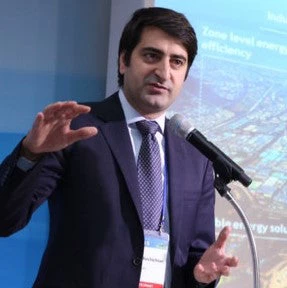Surrounded by hardened fan manufacturers in the city of Gujranwala, 70 kilometers north of Lahore, the task facing our World Bank Group team was to convince them that more efficient fans, to be promoted through an energy-efficiency labeling program by Pakistan’s government, would be beneficial to the sector as a whole. Questions abounded about how regulations can help competitiveness, and about whether small and lower-tier manufacturers might be left out of the equation. How would labeling be enforced, and how would forgeries be kept off the market?
Fast-forward 12 months to an IFC advisory project, which the government has set up for the procurement of 20,000 Pakistan Energy Label (PEL) energy-efficient fans in public buildings. Those fans will save the country an estimated 800,000 kilowatt hours – the equivalent of the annual energy use of about 600 domestic refrigerators – translating to about 400 tons of greenhouse gas (GHG) emissions reduction per year.
The project has created a new market segment for manufacturers of more efficient fans, nine of whom have received certification for the PEL from the National Energy Efficiency and Conservation Authority (NEECA). The fact that four fan manufacturers out of these nine are from the small and medium-sized enterprise (SME) sector is a positive indication of wider acceptance of this standards and labeling initiative.
Photo by Etiennne Kechichian
In time for the region’s next hot season, the request for more information and knowledge about energy-efficient fans has increased. The government of Punjab, as well as NEECA, has launched a comprehensive marketing campaign to promote these PEL fans and to improve the public’s knowledge about their benefits. In a market where heavy, inefficient cast-iron fans are considered good quality, changing perceptions requires coordination with technicians, real estate developers, retailers in the streets of Lahore and the countryside, and a deep understanding of the market.
The concept of market transformation is at times abstract – but we’ve seen signs in this relatively small project, implemented by the Trade & Competitiveness (T&C) Global Practice of the World Bank Group, that targeted and client-based interventions can have a significant impact on the competitiveness of an industry.
The key factor, in this case, was to influence the underlying trend in the market and to scale the ambitions of the manufacturing sector. The main drivers for the transformation of the country’s electric-fan market, which made up about $200 million in manufacturing revenue in 2010, can be viewed through four of the six global principles on climate dialogue, which was recently launched by the World Bank Group:
- Inclusion: It was vital to ensure that all levels of fan manufacturers in Pakistan are part of the energy-efficiency labeling process and that its benefits are understood by the entire sector.
- Urgency: The energy situation in Pakistan is dire. Action on energy efficiency and conservation is a top priority that couldn’t wait for another cooling season.
- Awareness: The different stakeholders needed to be aware of the benefits and misconceptions of more efficient fans. A rigorous market analysis helped identify the various gaps.
- Efficiency: From the Secretary of Energy to the Chief Minister, and from the Pakistan Fan Manufacturing Association to the national energy-efficiency agency, every key group was in line with prioritizing action in this sector.
The other two principles, on transparency and accountability, will need to drive implementation. The government is taking action, through its newly appointed agencies and laboratories, to help ensure that those capabilities are in place.
The local Punjab Energy Efficiency and Conservation Agency (PEECA) is now developing a preliminary impact assessment to be able to monitor and evaluate the initial results from its efforts at the end of the summer. Further efforts are now underway to help develop the Million+ Fan Project, which aims to replace more than 1 million fans in the government’s education and health facilities, which will result in a savings of about 44 million kilowatt hours of electricity through demand-side reduction – the equivalent of removing a five-megawatt coal-fired power plant from the market.
Of these million-plus fans, about 200,000 Pakistan Energy Label fans are expected to be installed through an existing Punjab Energy Department project for the solarization of 20,000 schools in Punjab in 2017.
One fan at a time, this successful intervention in Punjab provides a glimpse on how competitiveness can be paired with action on environmental and climate-related priorities.



Join the Conversation